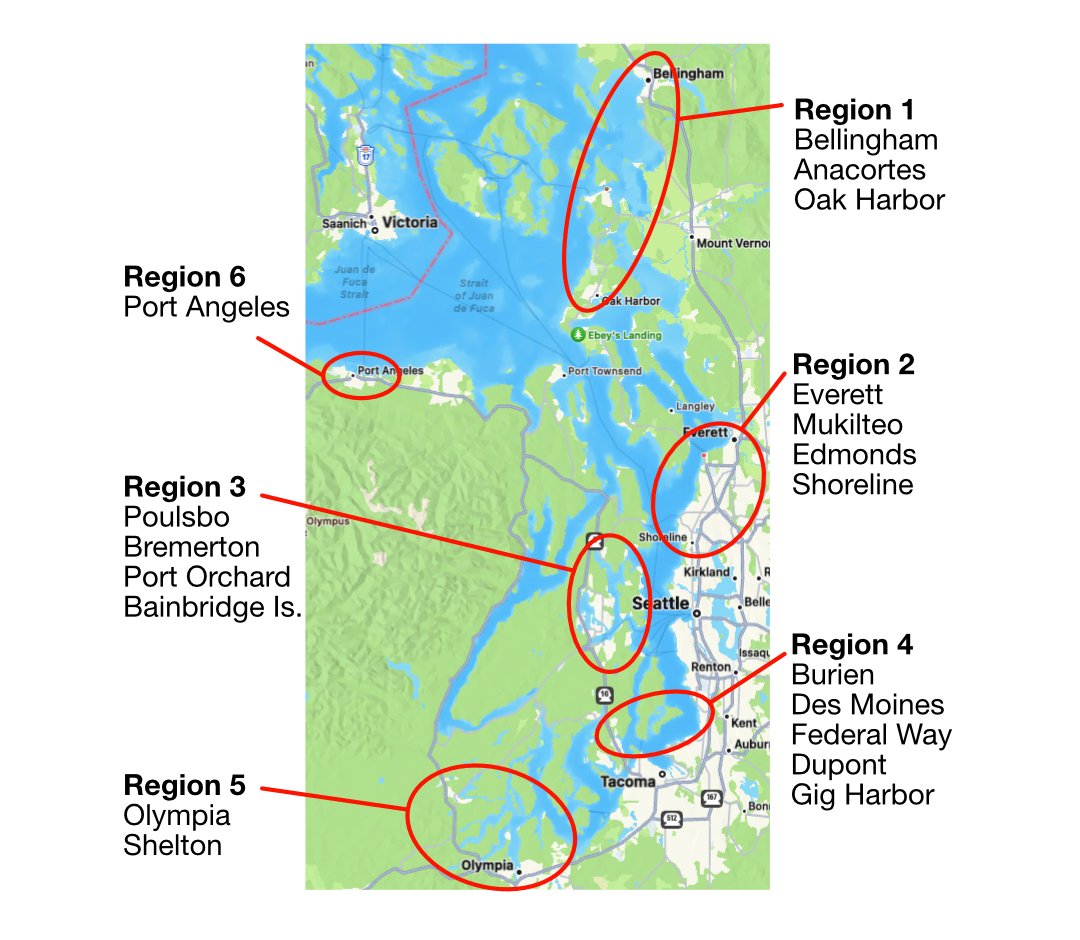

Most people live around the Salish Sea because of the remarkable beauty, the abundant wildlife and rich marine life.
In 2020 the Washington State portion of the Salish Sea area was home to 4.3 million people. In 1960 half this population were not here. So in sixty years the population doubled.
With people comes pollution. Chemicals and heavy metals fall from our vehicles like dandruff and dry skin. Industrial facilities drain their wastewater into storm drains and waste water treatment plants. Fertilizer from our lawns and farmland drain off into storm drains and stormwater ditches.
This chemical cocktail eventually pours into the Salish Sea.
The Department of Ecology does not require the monitoring of stormwater by any municipality with a Phase II stormwater discharge permit. The primary reason for this is cost. Most cities cannot afford the labor required for this activity.
Stormwater is one of the three major causes for the decline and likely extinction of our native salmon population. The other two causes are decades of over-fishing and loss of spawning habitat.
Our huge shellfish farms around the Salish Sea are affected by these same chemicals. Shellfish are filter feeders, meaning they suck in seawater seeking nutritious algae. But our chemicals from transportation, industry, and farmland fertilizers are drawn into shellfish too.
Frequently entire regions of the Salish Sea are closed to harvesting due to high toxicity of shellfish.
As residents, we organized. We bought raincoats and rubber boots. We raised the funds, through grants, and acquired the sensitive water testing equipment. We installed micro-biology labs in our garages or basements.
And we formed partnerships with our local city governments. If the city cannot monitor its stormwater for pollutants, we can. And we monitor our town's up to twice a month.
Each month we send our monitoring data to our city's stormwater manager. He or she can watch for areas around our cities that may be pollution sources, all from this data.
If we sample stormwater that cleary shows results that exceed the Department of Ecology's threshold values for possibly harmful concentrations of pollution we contact our city stormwater manager immediately. In most instances they start the detective work to find the pollution source.
The map below shows the regions that have cities around the Salish Sea. Our project is designed to help each shoreline municipality that has a Phase II stormwater discharge permit with the State. There are eighteen towns directly on the shoreline with this type of discharge permit.
We search for all the stormwater outfall pipes in a town that directly drain into the Salish Sea. We select the ones that we can safely reach and capture stormwater.
Naturally, some city outfall pipes are on steep slopes or private property. These outfall pipes we avoid. Even with these exceptions, there are plenty of outfall pipes we can safely approach.
In our map we have clustered several towns into a region. Currently we serve all the communities in regions 1 and 2.
In coming years we plan to introduce our project to volunteers in regions three through six. This depends on our success to gain funding for the equipment and supplies required.
You may notice that Seattle and Tacoma are not included. These cities have Phase 1 stormwater discharge permits. The city stormwater departments are organized differently and they do conduct periodic discharge monitoring.
